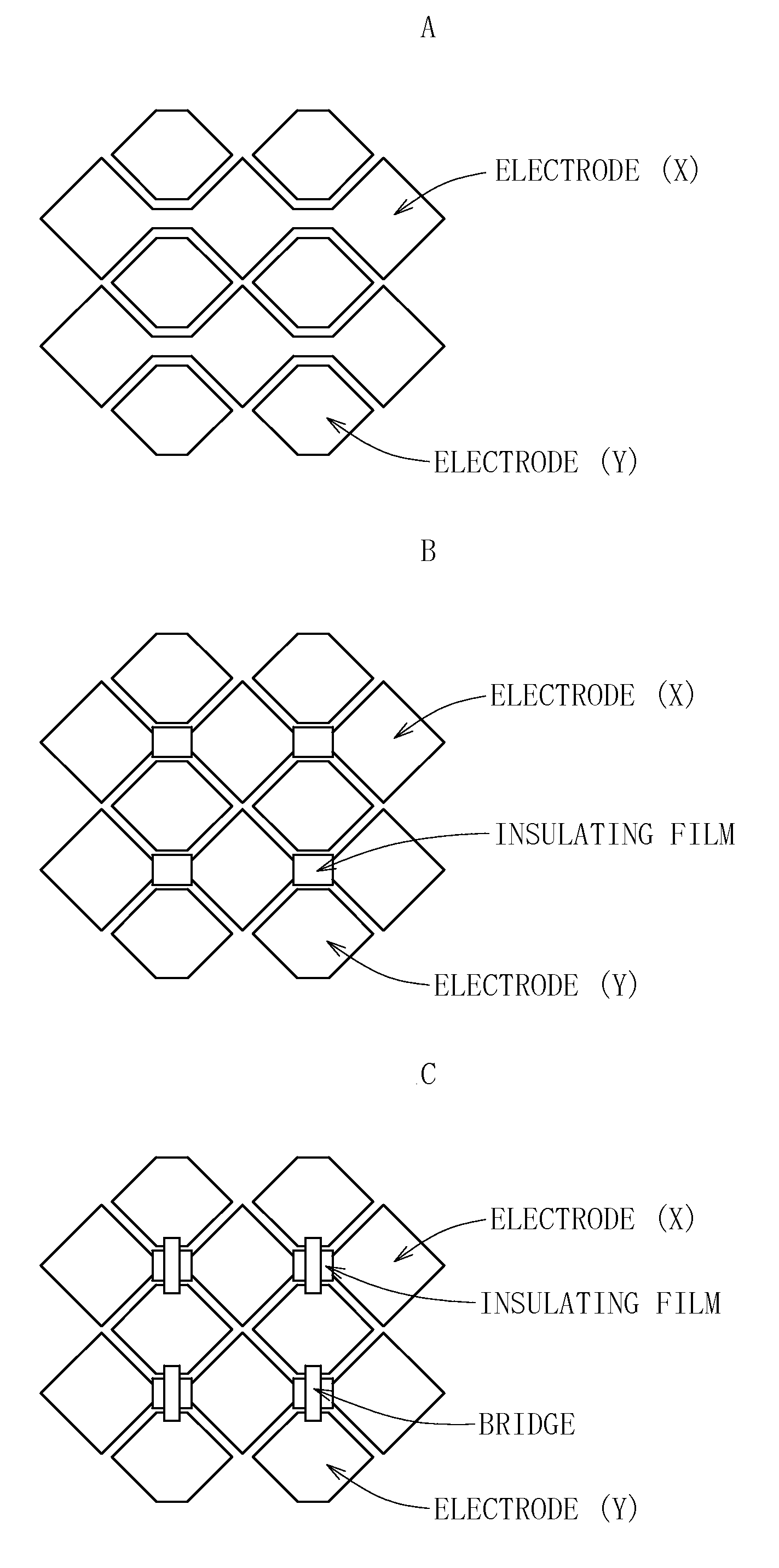Tempered glass and method for producing same
a technology of tempered glass and glass, applied in the field of tempered glass, to achieve the effect of high surface quality, high end surface quality, and efficient supply
- Summary
- Abstract
- Description
- Claims
- Application Information
AI Technical Summary
Benefits of technology
Problems solved by technology
Method used
Image
Examples
example 1
[0101]Hereinafter, examples of the present invention are described. Note that the following examples are merely illustrative. The present invention is by no means limited to the following examples.
[0102]Tables 1 to 3 show Examples of the present invention (Samples Nos. 1 to 21). Note that, in the tables, the term “Not measured” means that measurement has not yet been performed.
TABLE 1ExamplesNo. 1No. 2No. 3No. 4No. 5No. 6No. 7GlassSiO261.160.361.661.461.157.458.7compositionAl2O312.913.09.811.012.313.313.1(mol %)MgO6.56.66.66.66.56.76.7CaO———————B2O3———————ZrO2—————1.11.1Li2O———————Na2O15.916.016.116.016.016.416.2K2O3.53.53.53.53.53.63.6P2O5—0.52.31.40.51.40.5SnO2—0.10.10.10.10.10.1SO30.03——————Cl0.07——————Mg + Ca6.56.66.66.66.56.76.6(Al + Na + P) / Si0.50.50.50.50.50.50.5(B + Na) / Si0.260.270.260.260.260.290.28P / Si00.0080.0380.0230.0080.0250.008Al / Si0.20.20.20.20.20.20.2Na / Al1.21.21.61.51.31.21.2ρ (g / cm3)2.472.482.462.472.472.512.51α (×10−7 / ° C.)102102110105103104101Ps (° C.)5855845535...
example 2
[0116]Glass raw materials blended so as to achieve the glass composition described in Sample No. 21 were fed into a continuous melting furnace and were melted under heating, followed by fining. After that, the resultant molten glass was formed into a glass sheet having a thickness of 0.8 mm by a float method. Subsequently, the glass sheet obtained was processed into a glass sheet having a size of 1 m by 1.2 m, and then ion exchange treatment was performed by immersing the sheet in a KNO3 molten salt at 420° C. for 2 hours.
[0117]After a rectangular ITO patterning (for the XY directions) was performed as illustrated in FIG. 1A with respect to the resultant tempered glass, a patterning for forming an insulating film was performed as illustrated in FIG. 1B and a metal-film-bridge patterning (in the Y direction) was then performed as illustrated in FIG. 1C. Thus, a touch panel sensor was formed on the tempered glass.
[0118]Subsequently, masking with Au was performed so that each resultant...
PUM
| Property | Measurement | Unit |
|---|---|---|
| molar ratio | aaaaa | aaaaa |
| molar ratio | aaaaa | aaaaa |
| molar ratio | aaaaa | aaaaa |
Abstract
Description
Claims
Application Information
 Login to View More
Login to View More - R&D
- Intellectual Property
- Life Sciences
- Materials
- Tech Scout
- Unparalleled Data Quality
- Higher Quality Content
- 60% Fewer Hallucinations
Browse by: Latest US Patents, China's latest patents, Technical Efficacy Thesaurus, Application Domain, Technology Topic, Popular Technical Reports.
© 2025 PatSnap. All rights reserved.Legal|Privacy policy|Modern Slavery Act Transparency Statement|Sitemap|About US| Contact US: help@patsnap.com


